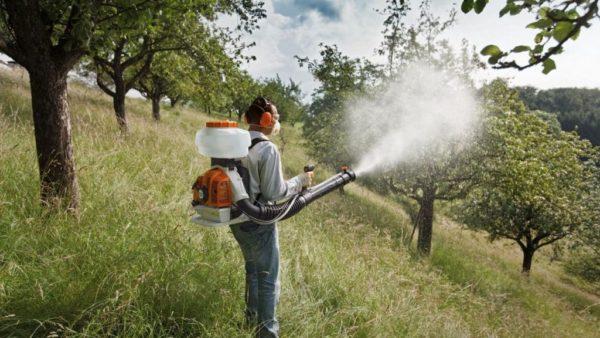Treatment for diseases and pests included in the mandatory program of garden work. Departure from the requirements of agricultural engineering leads to the gradual accumulation of pathogens. Rush of infections takes a substantial part of the crop, destroys the beauty of the garden. How to prevent the spread of disease and to spray the fruit tree in the fall after harvesting will be discussed later in the article.
Table of contents
Tasks of autumn spraying of a fruit tree
The fight against diseases and pests on fruit trees and shrubs must be waged throughout the season. But during the growing season it is impossible to use large concentrations of drugs: there is a risk of burning delicate greens, buds and flowers. Birds, frogs, and beneficial insects may be affected. There will be problems with the ecological purity of the crop.
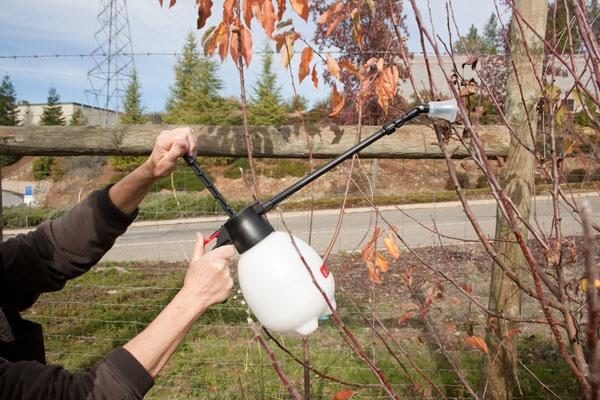
Specific dates
Before wintering, the wood and bark of trees mature and become strong. Shoots wood. Foliage gives all the nutrients and flies. The first frost finally harden the plants. Pathogens remain to winter on bare branches and leaves that have flown around. Now strong means will not burn the plants, but they will destroy many wintering parasites, especially microscopic fungi.
The treatment is carried out by spraying aqueous solutions, so the ambient temperature must be above zero.
The approximate time for Central Russia, the south of the Urals and Siberia is the middle or second half of October.
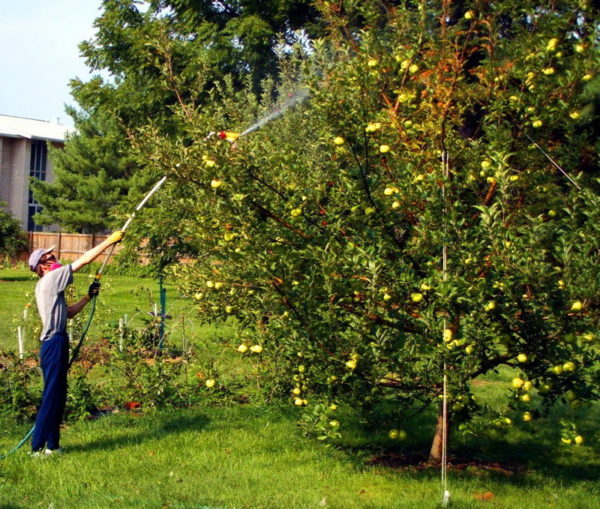
By lunar calendar
Some gardeners relate the work schedule to the lunar calendar. The fight against pathogens is especially effective when these enemies are weak and vulnerable.
The optimal dates are the New Moon and two days after it, as well as the time it takes for the rising Moon to travel along the "barren" signs of Aquarius, Leo and Virgo. If weather conditions do not allow you to choose such days, then the phase of the waning moon in the same "fruitless" constellations, as well as in Aries or Gemini, will do.
Such spraying is not recommended at the time of the "fertile" Cancer, Pisces and Taurus.
Processing objects
Insects and their egg-laying, pathogenic spores - all of this is hidden in cobweb-dried dry leaves, in mummified fruits, in cracks of the bark and on its surface, in leaf litter and under it. Disinfection is necessary to subject all branches, trunks, forks, the soil under the crown, the surrounding area.
Spraying is also subjected to:
- grapes, roses;
- strawberry beds;
- planting herbaceous perennials;
- paths and paths;
- wooden fences;
- trellis;
- various decorative designs;
- inventory, tools.
Various microinfections of bacterial and fungal nature are most effectively suppressed - scab, powdery mildew, spotting, moniliosis, coccomycosis, botrytis, and many others (only a few dozen pathogens distributed everywhere). The significance of the work increases after a rainy summer, when massive outbreaks of disease were observed.
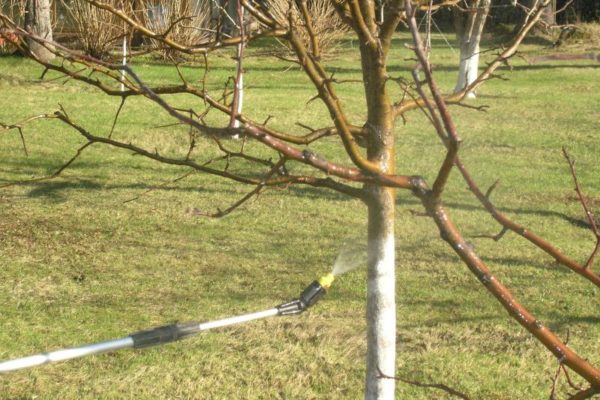
The fight is also directed against mosses and lichens. But insects are less vulnerable, because they have already hid - some in the ground, some under the bark and inside the buds. But partly the pests are exterminated: a mealybug and a pillow on grapes, wintering egg-laying of silkworms on trees; moth cocoons in cracks in the bark, etc.
Rules of work
To achieve maximum effect, it is necessary to take into account some important details.
- Pre-do the necessary pruning of trees and bushes, remove lichens and tinder mushrooms, scrape and burn (or deeply compost) the fallen leaf.
- The treatment is carried out by spraying with the obligatory SMALL spray. The drug should settle on the surface of a continuous fog.
- Approximate fluid consumption: 2-3 liters per average tree, 1-2 buckets per 1 hundred square meters.
- The weather is windless, without precipitation. It is desirable that the forecast promised ahead of a few dry days.
- They work in cloudy weather or in the evening (before sunset) - remembering that the air temperature should not be below +4 degrees.
- If you plan to whitewash the boles, then it is produced AFTER spraying.
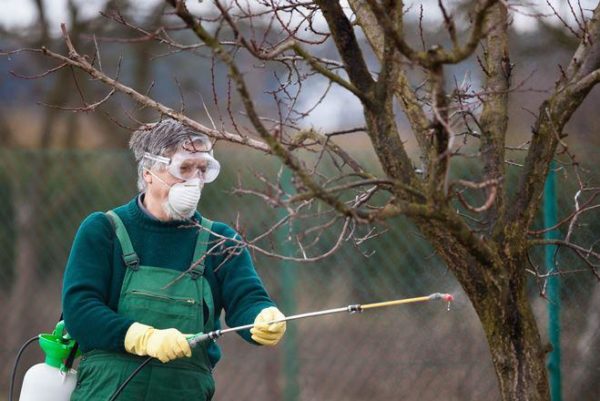
Preparations to spray the garden
Chemical means with effect of disinfecting are used. For a certain territory, only one of the options is selected.
Urea (carbamide)
Urea It is not a pesticide, it is considered environmentally friendly. Popular and affordable nitrogen fertilizer it is easy to plant in water, when spraying it “burns out” pathogens, without harming the plants that have fallen asleep. Concentration is needed very strong: 6-7% (600-700 g of urea per 10 liters of water). Sometimes 50 g of copper sulphate is added to such a mixture (in this case, everything is dissolved in hot water, then cooled).
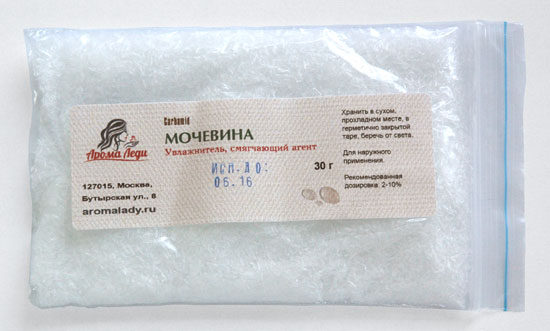
Copper sulphate and Bordeaux mixture
Copper sulfate - an aggressive chemical, besides its cost is quite high. If there is a desire to use this tool, then take a solution with a concentration of 1% (100 g per 10 l of water) for apples and pears, while the rest of the crops need a dose two times weaker (100 g per 20 liters).
The best option is considered 3% Bordeaux liquid: 300 g of copper sulphate and 300 g of hydrated lime (or 500 g of quicklime) per 10 liters of water. Likewise, a Burgundy liquid is prepared, only lime is replaced with soda ash.
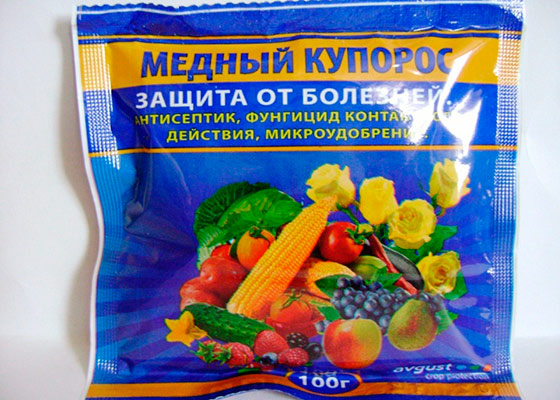
Iron sulfate and its dosage
inkstone It is considered more useful from an environmental point of view, moreover, it is more profitable for the price. For pears and apple trees, a 5% solution is made (500 g of substance per 10 liters of water), for the rest of the plants - 3% (300 g per bucket).
The buds, which have been treated with this drug since autumn, bloom in the spring a few days later.
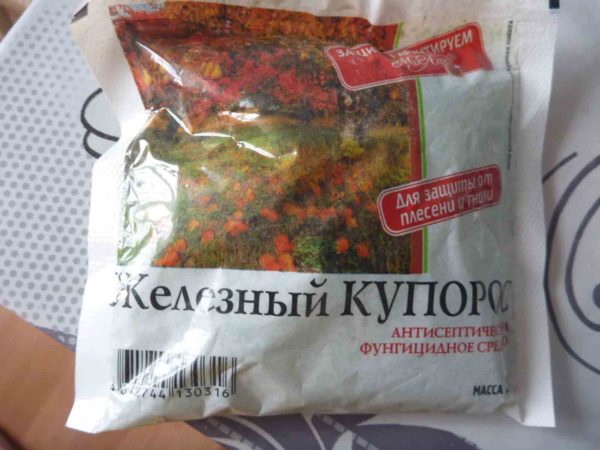
Security measures
Urea and iron sulphate belong to the 3rd class of danger to humans, copper sulphate - to the 2nd (more harmful). Sprayed in work clothes and rubber gloves. It is desirable to protect the eyes with glasses, and the nose and mouth - respirator type "Petal" or cotton-gauze bandage.
All actions with drugs are made away from children, pets, and food. In case of accidental ingestion of large doses of chemicals - gastric lavage and urgent treatment to a doctor is indicated.
Storage conditions and shelf life of mixtures
The warranty period for the storage of urea is from six months to two years, copper sulfate to three years, iron - without restrictions. In reality, all these chemicals retain their properties for a very long time - ten years or more, especially when stored in an airtight container. If it is opened, the substance should be protected from moisture, it is recommended to use it for six months.
Sometimes you can find tips on processing the garden with chemical oils - petroleum jelly, diesel fuel, etc. The oil film envelops the insects, and they die from suffocation. As for petrolatum, on the basis of it is produced the drug 30+, but it is recommended to use SPRING, before bud break. Many agronomists consider improvised means like diesel oil (400 ml per 10 liters of water) or kerosene dangerous for plants.
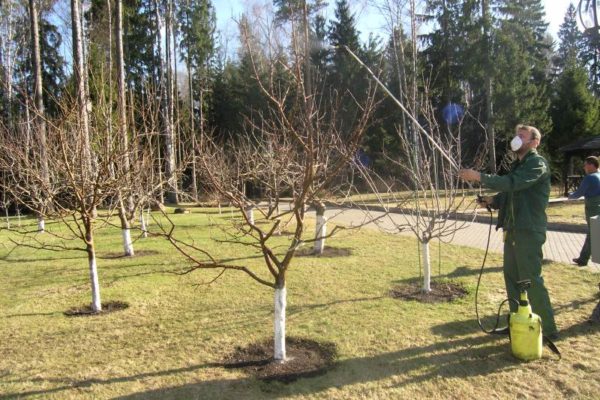
Previously, farmers widely used the toxic chemical Nitrofen, but it has long been recognized as the most harmful carcinogen and banned in most countries (including Russia); not for sale.
Similarities and differences in processing in spring and autumn
- Important and late autumn and early spring (before the buds swell) spraying. In the spring take the same means as in the fall.
- Only in spring apply hot water (+65 degrees) and the drug 30+.
- In the autumn there is more time for maneuver, but in spring it is sometimes easy to be late, especially if the heat came unexpectedly early and quickly.
Experts advise not to neglect to handle and spray the garden with autumn-eradicating disease mixtures. The danger to beneficial organisms and the soil is minimal, and the benefits to the garden are great.
